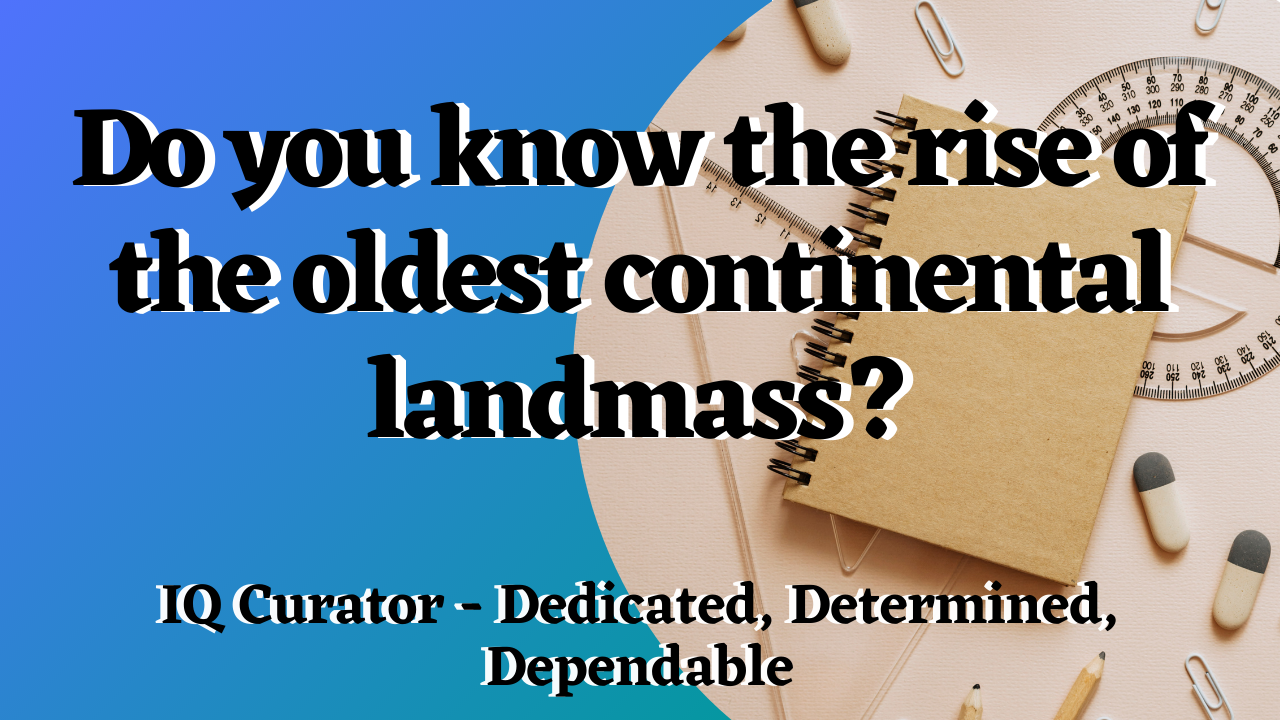A recent study suggests that the world's first continental land mass was formed 3.2 billion years ago, not 2.5 billion years ago (according to the "continental rift" theory).
The study was conducted by researchers from India, Australia and the US.
Back to basics: ‘Continental Displacement’ theory
The principle of ‘Continental Displacement’ relates to the distribution of oceans and continents. It was first introduced in 1912 by the German meteorologist Alfred Wegener. (Wegener died in Greenland in November 1930 - German meteorologist and geophysicist Alfred Wegener was the first person to formulate a complete statement of the continental drift hypothesis)
According to this theory, all the present continents were connected in the past by a huge group of land - ‘Pangea’ and around them a huge ocean- Panthalassa existed.
About 200 million years ago, Pangea began to divide into two major continental lands, known as Laurasia and Gondwanaland, forming the northern and southern elements, respectively.
After this Laurasia and Gondwanaland continued to divide into many smaller continents, which continues to this day.
Introduction
The study seeks to challenge the widely accepted view that continents were formed by oceans about 2.5 billion years ago.
According to the study, the continental shelf was formed about 700 million years ago, or about 3.2 billion years ago, and the earliest continental shelf formation may have taken place in the Singhbhum region of (Singhbhum District), Jharkhand during this period.
However, parts of the early continental landscape also exist in Australia and South Africa.
Geological similarities link the Singhbhum Craton to the Craton of South Africa and Western Australia.
The Main Findings
River Channels, Tidal Plains and Beaches:
Scientists assumed that when the earth was first formed, it was in the form of sedimentary rocks from the northern region of Singhbhum. Scientists have discovered a special type of sedimentary rock, called 'Sandstones'.
Scientists determined the age of uranium and secondary minerals by analyzing the lead content.
These rocks were 3.1 billion years old and formed in ancient rivers, beaches and shallow seas.
All these reservoirs can only exist if they are continental soils. It was thus concluded that the Singhbhum region was at sea 3.1 billion years ago.
Major volcanic activities:
Researchers also studied the granite that forms the continental crust of the 'Singhbhum' region.
This granite is 3.5 to 3.1 billion years old and was formed by massive volcanic activity and this process continued for millions of years, until the magma was strong enough to form a thick continental crust.
The continental crust was formed due to the ‘overflow’ (quality of being able to swim) due to the thickness and low density of the surrounding marine crust.
Evolution of organisms:
Early emergence of continents may have contributed to the proliferation of photosynthetic organisms, which may have increased the level of oxygen in the atmosphere.
Croton's weather caused nutrients to flow, providing phosphorus and other building blocks in the ocean for early life.
Croton is a stable interior of a continent made up of only ancient crystalline rocks.
Significance
At a time when climate change is being discussed around the world, it is important to understand how our atmosphere, oceans and climate came into being and how they played a significant role in making our planet habitable.
This will allow us to connect the inner part of the earth with its outer part.
Three other ancient continental divisions - Dharwad, Bastar and Bundelkhand - also exist in India. Their study is important to understand their development.
Welcome to IQ Curator’s General Knowledge - All Competitive Exams Questions - Answers Section. This section is a various topics & category-wise archive of IQ Curator’s GK (General Knowledge) Questions – 2021-2022 in Short MCQs format on various subjects and states. This section is suitable for aspirants preparing for UPSC-IAS, SSC-CGL and State Level Examinations of various states and also UPSC conducted NDA/ CDS/ IFS/ IES / CSE, SSC, Banking / IBPS, IAS, NTSE, CLAT, Railways, NDA, CDS, Judiciary, UPPSC, RPSC, GPSC, MPSC, MPPSC ,etc. examinations.
Please Click Here for : IQ Curator - What is Climate Change Performance Index 2021?
You may also Click Here for : General Knowledge - All Competitive Exams
FAQs - You will find the answers to all the questions below in this article.
Who proposed the continental drift theory?
Why did Pangea break up?
Is there a possibility that Pangea can happen again?
When did Pangea break up?
Why did scientists reject Wegener's theory?
Who is the father of continental drift?
What was the name of Alfred Wegener's hypothesis?
Are tectonic plates?
Did humans live on Pangea?
Good Luck!


